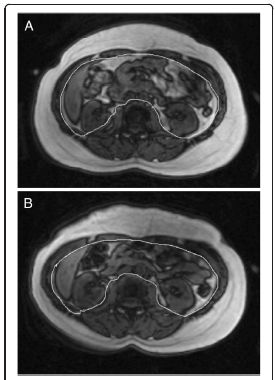TLDR version: We don’t burn subcutaneous belly fat directly, but it’ll be re-purposed and moved to deeper into the body to replace the visceral fat that we do burn.
Many of us (esp midlifers whose metabolisms naturally slow a bit) will see a temporary scary increase in visceral fat/belly measurements while on the long & winding road to recomposing the belly - even though being very compliant with LCHF dietary practice, exercise, etc. The belly rids our watery squishy ready-to-go subcutaneous fat by shuttling it into visceral fat before we can burn it!
I’ve been pondering my Squish City belly, knowing that change is happening - but then alarmed at an apparent increase in belly size though my subcutaneous fat is very squishy and obviously changing for the better. Listening to DeLauer talk about the process set my mind at ease, and encourages me to continue doing 18-24 hour natural IF a few days a week along with LCHF/keto. DeLauer’s video talk: https://youtu.be/au_85DRR2b8
References:
-
Klempel MC , et al. (n.d.). Intermittent fasting combined with calorie restriction is effective for weight loss and cardio-protection in obese women. - PubMed - NCBI. Retrieved from https://www.ncbi.nlm.nih.gov/pubmed/2…
-
Fasting induces a subcutaneous-to-visceral fat switch mediated by microRNA-149-3p and suppression of PRDM16. (2016, May 31). Retrieved from https://www.nature.com/articles/ncomm…
-
Plasticity of adipose tissue in response to fasting and refeeding in male mice. (n.d.). Retrieved from https://www.ncbi.nlm.nih.gov/pmc/arti…
-
Fasting induces a miRNA-mediated subcutaneous to visceral fat switch. (2016, 1). Retrieved from https://www.eurekalert.org/pub_releas…
Whew!




